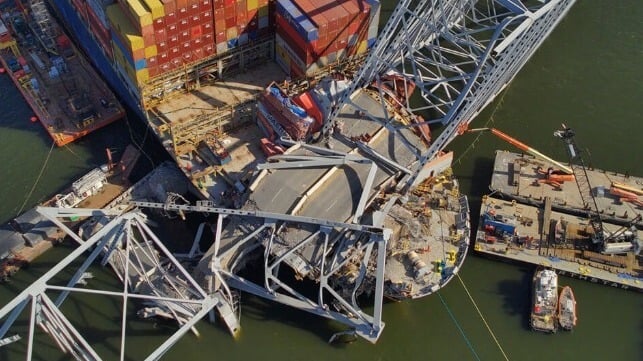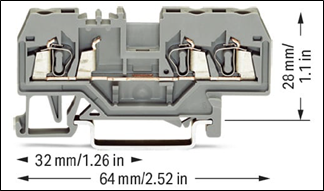NTSB Homes In on Connector Device From Dali's Switchboard

The NTSB has issued an update on its investigation into the disastrous allision of the boxship Dali with the Francis Scott Key Bridge in March, which destroyed the span, killed six workers and blocked off Baltimore's federal shipping channel for months.
The container ship lost electrical power twice as it approached the bridge on the accident voyage. Both times, mission-critical circuit breakers that connect the ship's generators to the rest of the electrical distribution system tripped (opened), turning off all the lights - even though the generators continued to run.
The loss of electrical power temporarily disabled the ship's rudder and forced a shutdown of the main engine, causing the Dali to lose propulsion and heading control as she approached the bridge's main span. Though backup control of steering was restored when the emergency generator started, it was too little and too late to prevent an allision with the southwestern bridge pier. Dali's momentum crushed the pier on impact, collapsing the entire bridge truss in seconds. The damage will likely take years to restore.
According to NTSB, the first set of breakers (HR1 and LR1) tripped when the Dali was just three ship lengths away from the bridge, causing the first blackout. With help from the OEM, the crew and other experts, NTSB has been examining these breakers closely at the component level to determine what might have gone wrong.
During testing, the investigators noticed "an interruption in the control circuit for HR1's undervoltage release." The undervoltage release is a device that trips the breaker when the voltage falls below a set threshold.
 The team pulled a terminal block - a female connector socket for plug-in components - out of the control circuit for the breaker undervoltage release (illustration at left, courtesy WAGO). Two sections of the control wiring associated with this terminal block were also removed from the switchboard, and these components were taken back to NTSB's laboratory for further testing.
The team pulled a terminal block - a female connector socket for plug-in components - out of the control circuit for the breaker undervoltage release (illustration at left, courtesy WAGO). Two sections of the control wiring associated with this terminal block were also removed from the switchboard, and these components were taken back to NTSB's laboratory for further testing.
The agency did not release further information on its findings, and it emphasized that the update should not be taken as a conclusion about the root cause of the casualty. The broader investigation into the allision is still under way; while NTSB has no formal timeline for completion, based on the length of past inquiries, the process often takes approximately one year.
